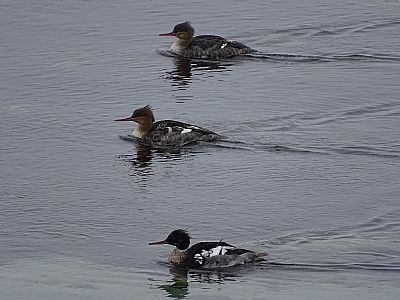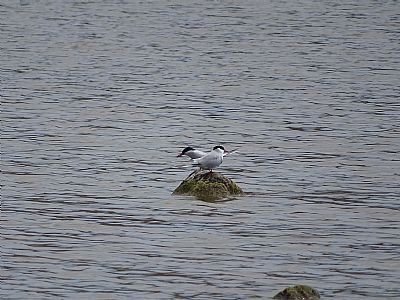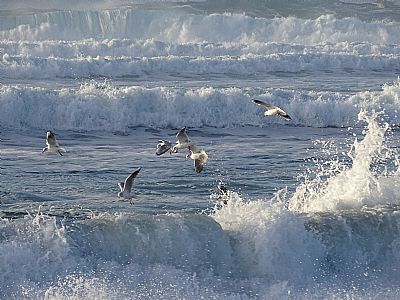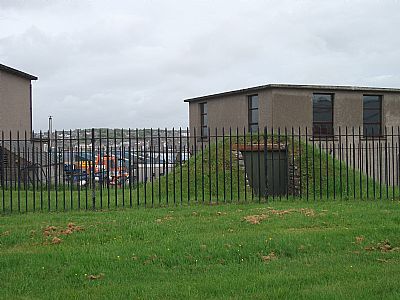Orkney Seabirds & Island Life &…..
by Bernie Bell - 17:31 on 17 July 2022
Orkney Seabirds & Island Life &…..
The magazine of the RSPB was dropped onto our doormat, and in it I read a short item entitled ‘Orkney seabird havens finally protected.’ The article explains that in late 2020 the Scottish Government created 12 marine Special Protection Areas in the waters around Scotland. Surprisingly, North Orkney and Scapa Flow weren’t included. The RSPB called on the Scottish Government to protect these areas, and in the spring of this year the necessary SPA’s were announced.
This protection should mean that any future development or activity in these areas must consider the potential impact on sea birds and not cause them harm.
Breeding seabird numbers have declined by 49% since the mid-1980’s, and the way that climate change is going doesn’t bode well for many forms of life on this planet. The SPA’s will help to shield the life in these areas and at least give them a chance to face the future.
Orkney is still fortunate in its numerous sea-birds, though recently there have been many disturbing instances of dead birds being found on Orkney beaches due to Avian ‘Flu. On a number of walks we’ve seen dead Gannets, and a couple of times Puffins. For some reason seeing a dead Puffin was particularly distressing, as alive they are such cheery, jolly little characters.
Here's the RSPB advice for if you come across dead birds....
"Dead Birds - DO NOT TOUCH THEM due to risk of them having avian influenza - REPORT TO DEFRA on 0300 200 7840. For more info see https://www.rspb.org.uk/birds-and-wildlife/advice/how-you-can-help-birds/disease-and-garden-wildlife/avian-influenza-updates/. Please do still notify us of any potential cases as well so we can alert our staff in your areas."
Avian ‘Flu presents yet another challenge to bird-life and the RSPB is one of a number of organizations dedicated to helping the birds of the world to survive in, and through, these times.
The birds may need to adapt – move their territories etc. and, as with many aspects of life today, it’s hard to see what’s ahead. Any protection or support for wildlife …helps.
In celebration of the new SPA’s, I thought I’d present a few photos of the seabirds of Orkney……..






************************************************************
Island Life
We have friends who live in Eday, and Wendy wrote to tell me of a walk they took along London Bay beach with the tide out, and of how..... “the road now hooks round the bay, but it clearly once struck straight across evidenced by the track which still heads down one side. You have to be careful not to drive on down it where the road bends round, as you can see the road going up the other side ahead of you. Then there's the remnants of the stone wall stark and solid across the sand, but dark and wet from the regular washing of the tide. It's quite possible that in years to come the sea will so overrun the isthmus here, that Eday will become 2 islands.”
We looked at the map of Eday and she’s absolutely right - you can see how, if the lagoon and the bay join up, Eday will become two islands. That kind of thing will have been happening for millennia – and now the water is rising again.
Wendy’s mention of the ‘drowned road’ reminded me of the drowned Bronze Age landscape in Roger Deakin’s book – ‘Waterlog’ – which I wrote about here…..
https://theorkneynews.scot/2018/12/06/islands/
‘As man proposes, the sea disposes.’
**************************************************************
Ancient & Modern
Kenny Brophy – ‘The Urban Pre-historian’ – https://theurbanprehistorian.wordpress.com/2021/03/ has an interest in and an ability for tracking down signs and remnants of ancient human occupation in modern urban settings.
I’ve been following his blog for some years, and there have been some absolute hum-dingers – sometimes about well-known, more obvious sites from pre-history….
https://theurbanprehistorian.wordpress.com/category/cochno-stone/
Sometimes significant remnants of ancient sites, which folk walk right by and don’t even notice…except for Kenny that is….
https://theurbanprehistorian.wordpress.com/category/urban-standing-stones/
The Hatston Industrial estate near Kirkwall here in Orkney includes a mound dating from the Iron Age - the Grain Earth House http://www.orkneyjar.com/history/earth-houses/grain.htm

It’s good that it has survived the construction of the aerodrome, and the Industrial Estate. https://theorkneynews.scot/2020/05/26/maps-ancient-modern-and-in-between/
Kenny’s work shows how attitudes to ancient sites have changed in recent decades – and I wrote about that a bit, too….https://theorkneynews.scot/2020/12/05/taming-the-stones/
Kenny’s blog posts are well worth following, and as they turn up I’ll include them in my blog.
*******************************************************************
Aaaaandddd…….here’s one I made earlier….. https://theorkneynews.scot/2017/07/31/the-two-johns-a-personal-perspective/
Add your comment
